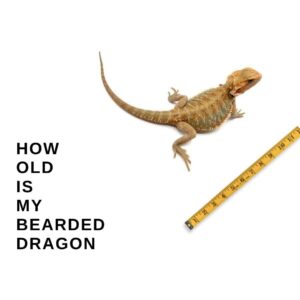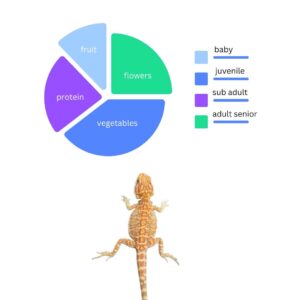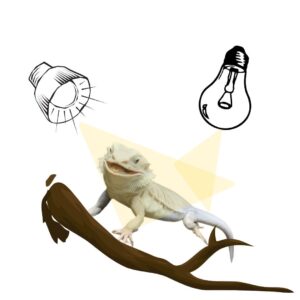In simple terms, a morph refers to a specific variation in the physical appearance of a bearded dragon. This can include differences in color, pattern, scale texture, and even body structure. Each morph is the result of a unique combination of genetic traits inherited from its parents.
In fact, genetics plays a crucial role in the development of bearded dragon morphs. These fascinating creatures have a diverse array of gene combinations, which allows for an astonishing range of morph variations.
Lately, responsible breeders are taking steps back on creating new morphs. The main reason is the well-being of animals. So instead of having 4-6 gene mixtures, they stick to 1-2.
At this point, it is difficult to even determine an accurate number of morphs.
Let’s dive deeper into the world of bearded dragon morphs and explore some of the most popular and intriguing variations.
Bearded Dragon Morphs: Table of Contents
The 3 major scaling marks in bearded dragons
- Normal scale
- Leatherback
- Duneer
Normal scale
Are natively found in Australia
Characteristics: rigid scales all over their back limbs and tail, they may not be the softest to touch but they do have a really cool look almost resembling the classic Mystical dragon
Leatherback
Have a smooth leathery texture to their scales they are soft to the touch all over their body and they only show spiky scales on their head and sides of their belly.
Duneer
The vertical stripe patterns running down their back and tail compared to horizontal stripes seen in normal dragons. Duneer can also be leatherback in which case you can easily tell the difference by looking at the spikes going in different directions on their stomach and their beard
Bearded dragon colors
Colors that a bearded dragon can display the most popular color seen in dragons is some variation of yellow also known as Citrus this was the first color to be bred in captive bearded dragons and sold to the masses.
The second most popular color is red this is a slightly newer coloring beardies but is quickly gaining a lot of popularity you can find these guys with the reddish brown tint all the way to a highly saturated bright red which is common in red trans dragons.
Another color that is commonly bred in Dragons is orange you can find these guys in a light peach tone or brightly saturated almost glowing.
The blue color is used to describe a specific coloration “hypo-trans,” but there is no such thing as a blue bearded dragon.
Bearded dragon species
There are eight main species of bearded dragons, and each species has its own unique characteristics. These eight species of bearded dragons vary in size, coloration, and habitat preferences. Pogona vitticeps is the most commonly kept as a pet due to its availability and docile nature.
- Pogona vitticeps
Also known as the central or inland bearded dragon, this species is native to central and eastern Australia. They are the most common species kept as pets and come in various colors and morphs.
- Pogona barbata
Commonly known as the eastern or coastal bearded dragon, this species is larger and can reach up to two feet in length. They inhabit rocky deserts, dry shrublands, and forested areas in central Australia.
- Pogona henrylawsoni
Also known as Lawson’s dragon, this species closely resembles P. vitticeps but is smaller in size. They are native to the arid regions of western Queensland and New South Wales.
- Pogona microlepidota
This species, also known as the small-scaled or pygmy bearded dragon, is one of the smallest bearded dragon species. They are found in arid regions of western and central Australia.
- Pogona minor
The minor bearded dragon is another small species found in the arid regions of central Australia. They have a more slender build compared to other species.
- Pogona mitchelli
This species, commonly known as Mitchell’s bearded dragon, is found in the arid regions of western Queensland and northern South Australia. They have a distinct black stripe running from their eye to their shoulder.
- Pogona nullarbor
The Nullarbor bearded dragon is named after the Nullarbor Plain in South Australia, which is its native habitat. They have a pale coloration and are well adapted to the arid conditions of the region.
- Pogona micros
This species, also known as the western bearded dragon, is found in the western parts of Australia. They have a more elongated snout compared to other species.
Bearded dragon morphs
Their beauty and laid-back nature make them perfect pets. No wonder there are many trials and errors to produce unique morphs.
Each morph can have a varion of patterns and colors.
I’ve selected nine sunning bearded dragon morphs to include in this piece, some of them are rare and quite unique.
Citrus bearded dragon morph
This morph is characterized by vibrant yellow and orange colors, resembling the juicy fruits it is named after. The Citrus morph is highly sought after by reptile enthusiasts due to its striking appearance and energetic personality.
Citrus bearded dragons can be found in various bloodlines and can be bred with other morphs, such as Hypo, Translucent, Leatherback, and Dunner, resulting in unique combinations of colors and patterns.
Translucent bearded dragon morph
As the name suggests, these bearded dragons have semi-transparent scales, giving them a ghostly appearance. This unique trait allows light to pass through their skin, creating an ethereal glow. Translucent morphs are admired for their otherworldly beauty and are often the center of attention in reptile shows.
Leatherback bearded dragon morph
These dragons have smooth, non-scaly skin, which gives them a soft and velvety texture. The absence of scales allows the vibrant colors of the dragon’s skin to shine through, creating a mesmerizing effect. Leatherback morphs are known for their gentle nature and are often favored as pets due to their docile temperament.
Silkback bearded dragon morph
Silkbacks lack the typical scales found in other morphs, resulting in a smooth and silky appearance. This morph has a shiny, almost reflective skin that gives it an otherworldly aura.
Hypomelanistic morphs
These dragons have a reduced amount of dark pigmentation, resulting in a lighter overall appearance. Their unique coloration often showcases stunning shades of pastel and cream, making them some of the most visually stunning morphs one can encounter.
Zero morphs
Are another rare category that will leave you in awe. These dragons lack the dark pigmentation found in their counterparts, resulting in a striking white or silver appearance. The absence of color allows their intricate scale patterns to take center stage, creating a truly stunning visual spectacle.
Zero dragons have reduced or absent scales, similar to leatherbacks. They may exhibit a smoother appearance with minimal scalation.
German Giant
German Giant bearded dragons are a unique type of bearded dragon that can grow approximately 50% larger than the average size of a standard bearded dragon.
They exhibit a variety of colors and patterns, similar to other bearded dragon morphs. Due to their larger size, German Giant require more spacious enclosures and habitats compared to regular bearded dragons.
Witblits
The term “Witblits” refers to a patternless morph that displays soft white through light pastel colors.
These dragons have a lack of pattern on their scales, giving them a uniform appearance. They are often characterized by their lighter coloring and may have shades of white, cream, or pastel tones.
Witblits bearded dragons have gained the attention and interest of reptile enthusiasts and breeders. They have been sought after and selectively bred to propagate this specific morph, although availability may vary depending on the region and breeder.
Paradox
The term “Paradox” refers to the dragon’s markings, which are characterized by spots of color that appear almost randomly and do not follow a discernable pattern.
Paradox morph is not a standard dominant or recessive genetic trait. It can appear randomly and doesn’t have a guaranteed outcome when breeding Paradox dragons. Each Paradox bearded dragon is unique and can vary in appearance, with some expressing purple colors while others may have different color variations.
Do bearded dragon morph patterns and colors change with time
Bearded dragon colors, morphs, and patterns can indeed change over time.
Bearded dragons can undergo color changes throughout their lives. Factors such as temperature, mood, stress, care and age, and health can influence their coloration.
For example, a bearded dragon may darken its color when it’s stressed or cold to absorb more heat, while it may lighten its color when it’s warm or basking to reflect excess heat.
Shedding also plays a role in color changes, as the new skin may appear brighter and more vibrant after shedding.
The names of bearded dragon morphs may vary among breeders, and there can be differences in the terminology used to describe colors and patterns. This is also a common reason why beardie parents think they got the wrong morph.
My Senior Paws is a participant in the Amazon Services LLC Associates Program, an affiliate advertising program designed to provide a means for sites to earn advertising fees by advertising and linking to Amazon.com. We also participate in other affiliate programs which compensate us for referring traffic.




